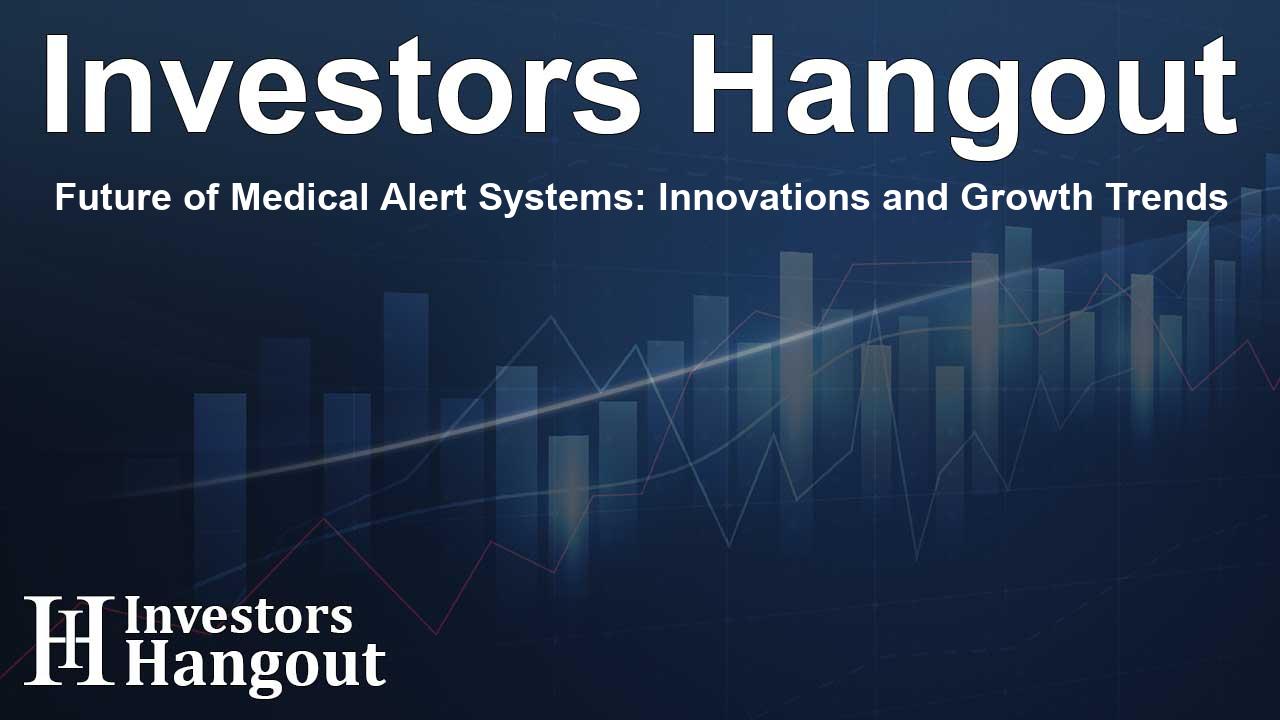Future of Medical Alert Systems: Innovations and Growth Trends

Expanding Horizon of Medical Alert Systems
The medical alert systems market is on the precipice of remarkable growth, projected to escalate from USD 9.05 billion to a staggering USD 18.71 billion. This upward trajectory indicates a compound annual growth rate (CAGR) of 8.45% from the upcoming years until the turn of the decade. As our society ages and technology advances, the demand for efficient, reliable medical alert solutions skyrockets.
Market Growth Drivers
The motivating force behind this growth can be attributed primarily to the rapidly increasing aging population coupled with significant advancements in wearable technologies. These systems have evolved dramatically with sophisticated features including AI-based monitoring and real-time health monitoring capabilities that offer users peace of mind and proactive healthcare management.
Technological Innovations Enhancing User Experience
The integration of artificial intelligence into medical alert systems is a game-changer, enhancing user experience and operational metrics. With features like predictive fall detection and continuous monitoring of health trends, these devices can significantly reduce response times in emergencies. This means that people living alone or with chronic conditions can maintain their independence, while still receiving timely assistance when needed.
Impact of the Elderly Population
The surge in the elderly population, along with an increase in chronic health issues, has accentuated the importance of reliable medical alert systems. Aging individuals often face complex health conditions, making it essential for them to have immediate access to emergency services. In fact, assessments reflect that in the United States, the medical alert systems market alone was valued at USD 2.41 billion in recent years, poised to grow dramatically to USD 4.36 billion by 2032.
Type Segmentation within the Market
The market comprises various types of medical alert systems, with Mobile Personal Emergency Response Systems (PERS) currently commanding the most significant market share. By 2023, Mobile PERS took the lead, represented by a robust 54.3% market share due to its portability and the convenience it offers elderly users needing assistance on the go.
Standalone PERS Emerges as a Key Player
Looking towards the future, Standalone PERS are expected to experience the highest growth rate as they embrace automatic fall detection and enhanced integration with smart home technologies. Such advancements make them a top choice for individuals seeking to maintain independence in their living environments.
Market Geography and Expansion
Regionally, North America remains the dominant player in the medical alert systems market. With a market share of about 38.6%, it benefits from a sophisticated healthcare infrastructure and a focus on elder care. The proliferation of telehealth solutions further enhances the appeal of medical alert systems, making their adoption quicker and more widespread.
Emerging Markets in Asia-Pacific
However, change is afoot, with the Asia-Pacific region emerging as the fastest-growing segment within the market. Fuels like increased healthcare spending and an evolving awareness of health technologies in countries such as Japan and China are likely to pave the way for significant market advancements.
Leading Players in the Medical Alert Systems Market
As this market grows, numerous companies are forging forward with innovative solutions. Notable players include Medical Guardian, Life Alert Emergency Response, Philips Lifeline, and MobileHelp, among others. Each produces unique offerings from mobile devices to classic in-home systems, catering to various user preferences and needs.
Innovative Features and User Needs
The integration of AI technology and other functionalities like GPS tracking within these systems has made emergency response devices more effective and appealing. Users now enjoy features that not only help in emergencies but also support their everyday health management.
Frequently Asked Questions
What factors are driving the growth of the medical alert systems market?
The increasing aging population and advancements in wearable technology are among the primary factors driving market growth.
What are Mobile and Standalone PERS?
Mobile PERS are portable devices ideal for emergency assistance on-the-go, while Standalone PERS focus on home use and often feature automated fall detection.
How does AI integration benefit medical alert systems?
AI integration enhances the efficiency of medical alert systems through features like predictive fall detection, allowing for quicker response times during emergencies.
Which region leads the medical alert systems market?
North America currently leads the medical alert systems market, driven by robust healthcare infrastructure and strong demand for elder care solutions.
What are some key players in the medical alert systems market?
Major players include Medical Guardian, Life Alert Emergency Response, and Philips Lifeline, each providing unique products catering to different needs.
About The Author
Contact Lucas Young privately here. Or send an email with ATTN: Lucas Young as the subject to contact@investorshangout.com.
About Investors Hangout
Investors Hangout is a leading online stock forum for financial discussion and learning, offering a wide range of free tools and resources. It draws in traders of all levels, who exchange market knowledge, investigate trading tactics, and keep an eye on industry developments in real time. Featuring financial articles, stock message boards, quotes, charts, company profiles, and live news updates. Through cooperative learning and a wealth of informational resources, it helps users from novices creating their first portfolios to experts honing their techniques. Join Investors Hangout today: https://investorshangout.com/
The content of this article is based on factual, publicly available information and does not represent legal, financial, or investment advice. Investors Hangout does not offer financial advice, and the author is not a licensed financial advisor. Consult a qualified advisor before making any financial or investment decisions based on this article. This article should not be considered advice to purchase, sell, or hold any securities or other investments. If any of the material provided here is inaccurate, please contact us for corrections.
